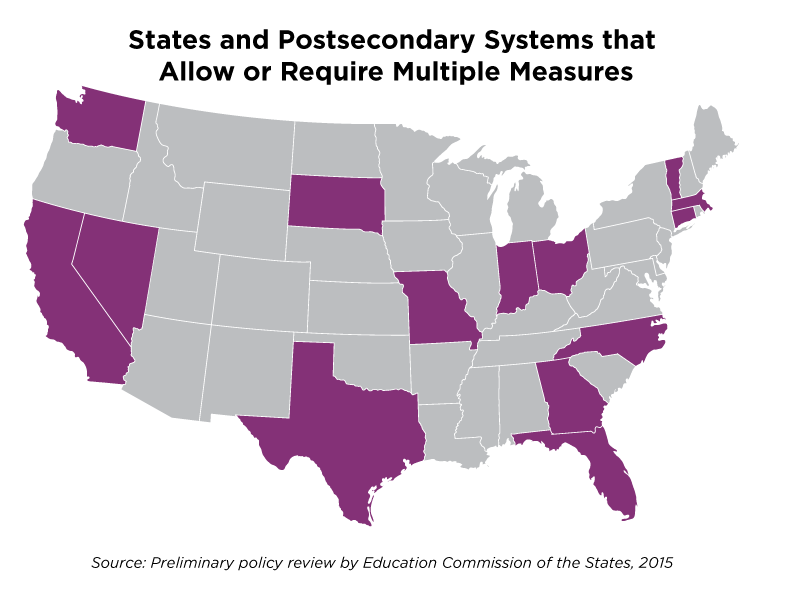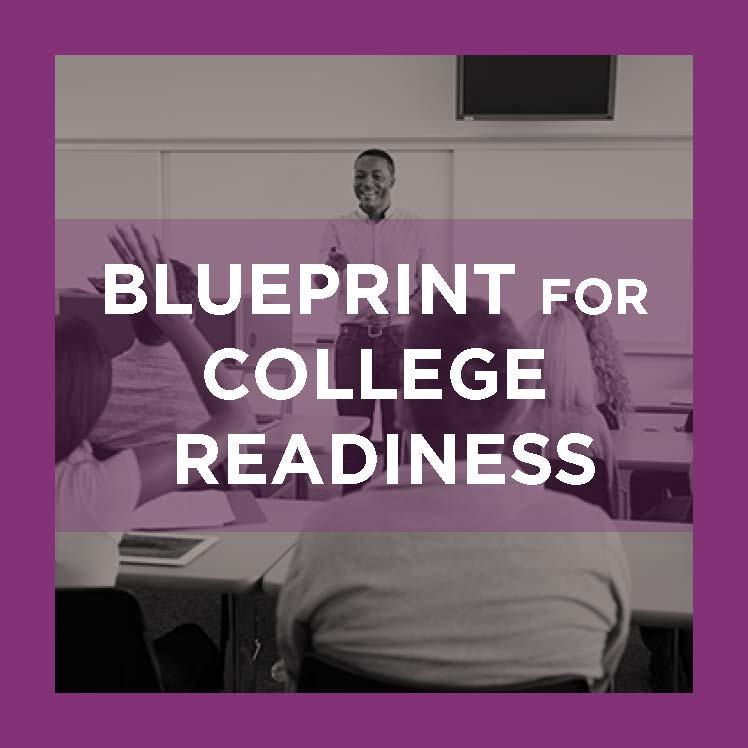A slow but steady movement is emerging to rethink – and revise – the single test, single cut score approach that sorts new college students into remedial or credit-level courses. To counter the shortcomings of a potentially limiting and high-stakes practice, several states and postsecondary systems are beginning to use additional indicators to gauge students’ college readiness. Multiple measures could offer a more accurate way for students to demonstrate their potential to succeed in college-level courses and reduce the chance they will be placed in remedial courses.
In part, the shift toward multiple measures has been prompted – or reinforced – by studies (here and here) from the Community College Research Center (CCRC) that found a student’s high school grade point average (GPA) often is a better predictor of college-level class performance than relying solely on their standardized assessment scores. Another CCRC study suggested that 18 percent of students who take a common math placement test and 30 percent who take the English exam are placed in remediation even though they could have earned a B or higher in a credit-bearing course.
A preliminary review by Education Commission of the States found that at least 14 states or postsecondary systems allow or require measures that include but go beyond standardized tests to determine initial course placement. The most common use of multiple indicators combines assessments, GPA and often high school coursework. Other measures include high school English and math grades, high school or institutional assessments, diagnostics exams, non-cognitive factors, previous college courses, work experience and student self-placement. 
Under recently developed policies, California and North Carolina’s community colleges and most institutions in Connecticut, Massachusetts and Texas will be required to use multiple measures for course placement. In North Carolina, work undertaken through the Developmental Education Initiative led to a multiple measures policy that incorporates high school GPA, ACT or SAT scores, and diagnostic test results.
In other states, such as Florida, Nevada and Ohio, institutions may rely on measures in addition to assessments to direct students into credit-bearing or remedial courses. Ohio’s placement policy, for example, allows campuses to consider high school GPA, writing assessments and a review of previous college work, or other indicators.
Adopting multiple measures often coincides with redesigning remedial instruction through co-requisite, accelerated, modular or math pathways models. These reforms aim to enroll underprepared students immediately or as soon as possible in entry-level – or gateway – math and English courses. Using an array of indicators may help identify the type and extent of interventions these students may require to succeed in their gateway classes and beyond.
States and systems that are interested in exploring multiple indicators may want to consider the following:
- Should using multiple measures be voluntary or mandatory?
- How will K-12 and higher education collaborate to select multiple measures?
- Should a set of indicators be prescribed or should institutions choose from a menu of measures?
- Should a pilot project be the first step before scaling the use of multiple indicators?
- How will the multiple measures be evaluated for their effectiveness?
States and postsecondary systems may not abandon standardized exam scores for course placement decisions, but a move toward multiple measures could lead to fewer students being directed toward remediation and far more completing their degree.
More on multiple measures: Check out a report on core principles for transforming remediation, published by Education Commission of the States and other organizations, as well as Research for Action’s project on multiple indicators and placement policies and WestEd’s paper on multiple measures in Core to College states.










